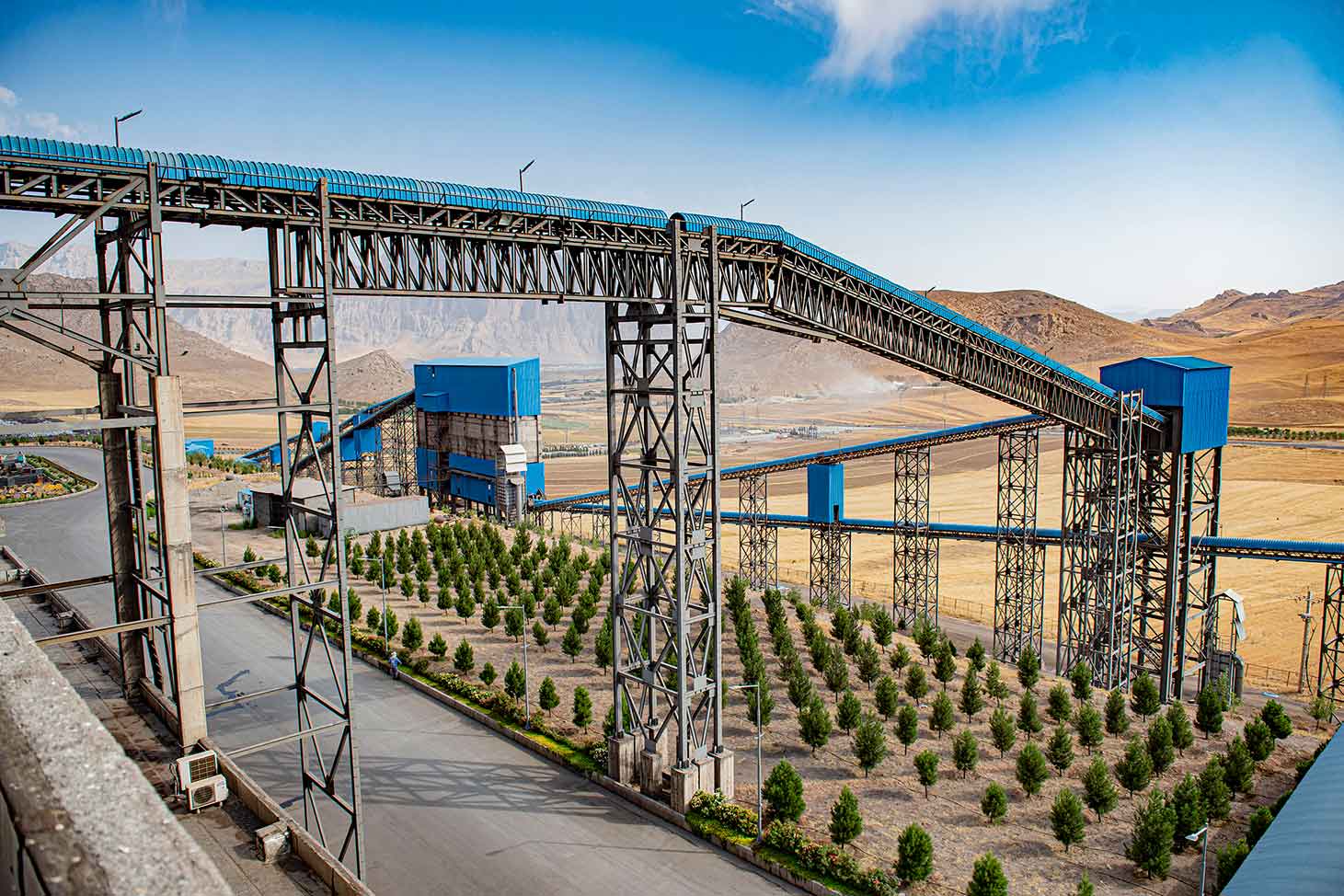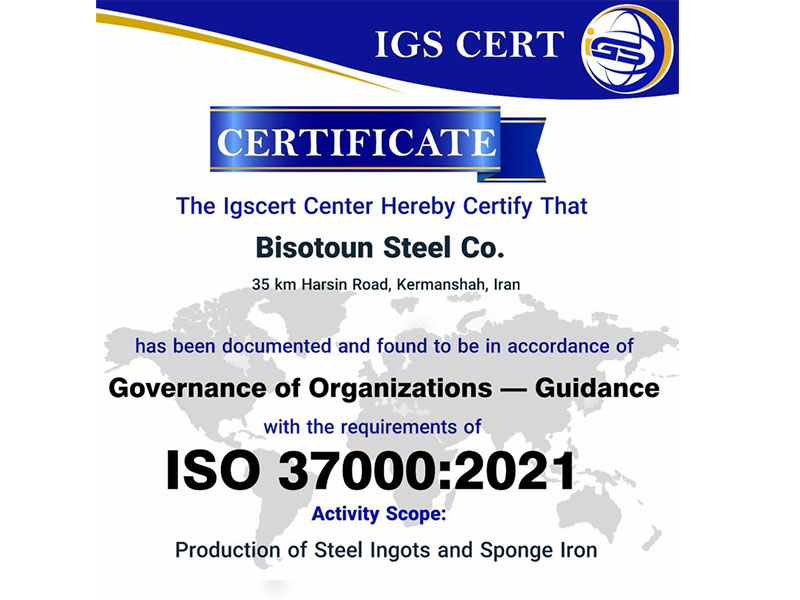“As long as natural gas is readily available, why should we use coal for iron reduction?”
This was a statement by a professor at one of the country’s universities no more than two decades ago. But today, the opposite is being implemented. Despite being the second-largest holder of natural gas reserves in the world, the situation has evolved such that gas-based iron reduction is no longer economically viable. For this reason, industrialists in the sector are seeking non-gas-based methods. For several years now, coal-based reduction methods have imposed themselves on the country’s steel industry. Given the minimum reserve of 3 billion tons of thermal coal in the country, the use of this material for iron reduction has increased. Nevertheless, for the past two years, energy supply to industries—particularly iron and steel—has emerged as a critical problem. Thus, while coal has partly resolved the issue of gas availability for reduction, it is also necessary to consider increasing the efficiency of coal-based methods. The energy efficiency of coal-based processes is at most 65%, whereas gas-based methods can reach up to 85%. Therefore, energy consumption in these methods must also be reduced. This article aims to introduce and examine methods for reducing energy consumption in coal-based iron reduction.
Insulation of Furnaces and Related Equipment
The most important and effective way to prevent energy loss is proper insulation of the reduction line, especially the furnace. Currently, the thermal conductivity of alumino-silicate bricks and masses used in the furnace section is around 0.8 to 1.6 W/m.ok, but with proper insulation, this can be reduced to as low as 0.003 W/m.ok. In general, by using modern refractory and insulating materials, up to 60% of energy loss can be prevented. Nano-silicate, nanocomposite, nanocarbon insulators, vacuum panels based on silicate or foam, fiberglass, ceramic fibers, and zeolite refractory bricks are among the materials that can be used to reduce energy loss.Figure 1 schematically shows the application of ceramic fibers for insulating a rotary kiln. This layer can reduce the thermal conductivity to a maximum of 0.1 W/m.ok.
The main challenge with these materials is their high cost. For example, the refractory cost for one square meter using medium cement mass is a maximum of $11, whereas modern insulators like vacuum panels impose a cost of at least $50. It is hoped that by localizing the production of these materials, their cost will decrease, making them more accessible.
Figure 1: Schematic of rotary kiln insulation for energy consumption optimization
Improving the Quality of Raw Materials and Charging Process
By modifying the raw materials or their charging method, it is possible to reduce the energy required for reduction. For example, the current pellet porosity is between 20% and 30%. If this increases to 30%-40%, energy consumption can be reduced by up to 7%. Moreover, using materials with optimal conditions (size, particle shape, etc.) and ratios not only improves material consumption but also reduces energy usage. Another recommendation is pre-mixing before charging into the reduction furnace. Typically, the charge materials are fed separately, but studies have shown that if these materials are mixed before entering the furnace, energy consumption can be reduced by 10%-20%—a very desirable figure. Thus, by controlling quality and improving the charging process of raw materials, energy consumption can be minimized.
Controlling Reduction Parameters
Reduction parameters also significantly affect product quality and energy consumption. The most important control parameter is temperature. Although the recommended reduction temperature is between 950°C and 1100°C, every 50°C increase leads to a 10%-15% rise in energy consumption.
Another parameter is the CO to CO₂ ratio, which should ideally be between 1.5 and 2. Lower ratios reduce reduction efficiency, while higher ratios increase both energy and coal consumption.
Material feed rate, furnace rotation speed, heating rate, etc., are other control parameters that must be optimized. Although research and technical literature provide optimal values, each facility is unique, and parameters must be tested and adjusted according to its specific conditions.
Use of Effective Reducing Gases
The use of hydrogen gas (H₂) as an effective reducing agent in coal-based, direct reduction plays a vital role in reducing energy consumption.
Hydrogen can directly reduce hematite (Fe₂O₃ + 3H₂ → 2Fe + 3H₂O), and unlike CO, it does not produce side gases like CO₂, allowing for more efficient energy use. Hydrogen’s small molecular size and high permeability accelerate reduction reactions, reducing both reduction time and energy usage. Furthermore, hydrogen can react at lower temperatures than CO, thus reducing the energy required to maintain furnace temperatures.
Studies show that using 15%-25% hydrogen can reduce energy consumption by 10%-15%. Compared to pure coal use (which generates CO and CO₂),
hydrogen as the main reducing gas can significantly reduce greenhouse gas emissions and improve energy efficiency.
Hydrogen can also be sourced from clean, renewable resources, potentially reducing long-term costs and environmental damage. However, the challenges of hydrogen storage, high cost, and water generation in the furnace have so far made its industrial use in the country infeasible.
Use of Heat Recovery Systems
The use of heat recovery systems in coal-based direct reduction processes can significantly reduce energy consumption.
For example, in an iron reduction unit using a rotary kiln, waste heat from the kiln’s outlet or body can be redirected to heat recovery systems and used for preheating coal, pellets, or even for space heating. Figure 2 shows a schematic of a heat recovery system from the kiln body.
This reduces the need for additional fuel to maintain furnace temperature, potentially lowering energy consumption by up to 10%.
Moreover, by using less fossil fuel, greenhouse gas emissions are also reduced—positively impacting the environment. However, these systems have drawbacks, including high initial installation costs and, in some cases, the need for complex, regular maintenance. Additionally, the efficiency of heat recovery depends on system design and operational conditions.
Figure 2: Schematic of a heat recovery system from the rotary kiln body
Use of Pulsed and Cyclic Energy Consumption Technologies
Current reduction systems consume energy uniformly, but it is possible to vary energy input based on ambient temperature, material feed rate, material quality, etc.
This refers to pulsed and cyclic technologies, where energy (gas or electricity) is applied in timed pulses or cycles, each resulting in lower energy consumption.
However, these technologies have drawbacks such as high equipment costs and complexity. Also, precise timing and intensity control of the pulses is necessary; improper configuration may reduce process efficiency.
Use of Artificial Intelligence Technologies
Artificial intelligence (AI) can be used to optimize process parameters including temperature, reducing gas ratios, reaction rates, reduction time, and more.
By analyzing large datasets and running complex simulations, AI can identify optimal patterns and automatically adjust industrial processes.
For instance, using machine learning algorithms, AI can predict the best gas composition and temperature at any given moment. This transforms uniform energy consumption into an adaptive system using optimized parameters in real time.
Another benefit is real-time monitoring and predictive control of operating conditions. AI can continuously monitor system performance, detect deviations, and implement corrective actions—while also reducing required human workforce.
Although implementing these algorithms requires precise programming and engineering, their long-term benefits are significant.
Waste Management in Reduction Processes
Using waste materials from the reduction process, although not directly reducing energy consumption, can help offset energy costs by creating secondary revenue.
Ash, soot, off-spec product, sponge iron fines, and dolochar are some of the waste products typically stored or discarded.
For example, ash can be used to produce construction materials, fertilizer, or for chemical treatment; sponge iron fines, which have low melting efficiency, can be used to produce iron sulfate.
Furthermore, waste materials may contain valuable metals such as platinum, palladium, and silver. Using cost-effective extraction methods can generate added value.
Conclusion
This article reviewed suggested methods for reducing energy consumption in coal-based reduction furnaces.
Undoubtedly, each method imposes certain costs, but given the global energy imbalance—especially in industry—moving toward energy optimization methods is necessary.
As mentioned, the most effective method is insulation using low thermal conductivity refractory masses.
Good insulation can prevent energy waste for years without recurring costs.
Other methods should be continuously monitored and adjusted in real time.
Author: Ms. Leila Momeni – Technical Engineering Office Expert, Shokri Industrial Group







